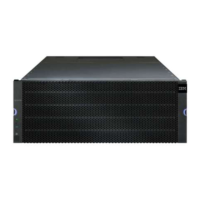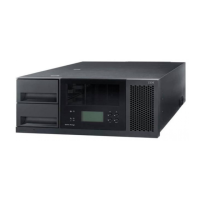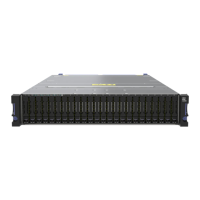v startDate – A specific date on which you want to create a FlashCopy logical drive and perform a
copy-on-write operation. The format for entering the date is MM:DD:YY. If you do not provide a start
date, the current date is used. An example of this option is startDate=06:27:11.
v scheduleDay - A day of the week on which you want to create a FlashCopy logical drive and perform a
copy-on-write operation. The values that you can enter are: monday, tuesday, wednesday, thursday,
friday, saturday, and sunday. An example of this option is scheduleDay=wednesday.
v startTime – The time of a day that you want to create a FlashCopy logical drive and start performing
a copy-on-write operation. The format for entering the time is HH:MM, where HH is the hour and MM is
the minute past the hour. Use a 24-hour clock. For example, 2:00 in the afternoon is 14:00. An example
of this option is startTime=14:27.
v scheduleInterval – An amount of time, in minutes, that you want to have as a minimum between
copy-on-write operation. It is possible for you to create a schedule in which you have overlapping
copy-on-write operations because of the duration a copy operation. You can make sure that you have
time between copy-on-write operations by using this option. The maximum value for the
scheduleInterval option is 1440 minutes. An example of this option is scheduleInterval=180.
v endDate – A specific date on which you want to stop creating a FlashCopy logical drive and end the
copy-on-write operations. The format for entering the date is MM:DD:YY. An example of this option is
endDate=11:26:11.
v timesPerDay – The number of times that you want the schedule to run in a day. An example of this
option is timesPerDay=4.
v timeZone – Use this parameter to define the time zone in which the storage subsystem is operating.
You can define the time zone in one of two ways:
– GMT±HH:MM – The time zone offset from GMT. Enter the offset in hours and minutes. For example
GMT-06:00 is the central time zone in the United States.
– Text string – Standard time zone text strings. For example: "USA/Chicago"or"Germany/Berlin". Time
zone text strings s are case sensitive. If you enter an incorrect text string, GMT time is used. Enclose
the text string in double quotation marks.
The code string for defining a schedule is similar to these examples:
enableSchedule=true schedule startTime=14:27
enableSchedule=true schedule scheduleInterval=180
enableSchedule=true schedule timeZone=GMT-06:00
enableSchedule=true schedule timeZone="USA/Chicago"
If you also use the scheduleInterval option, the firmware will choose between the timesPerDay option
and the scheduleInterval option by selecting the lowest value of the two options. The firmware
calculates an integer value for the scheduleInterval option by dividing 1440 by a the scheduleInterval
option value that you set. For example, 1440/180 = 8. The firmware then compares the timesPerDay
integer value with the calculated scheduleInterval integer value and uses the smaller value.
To remove a schedule, use the delete logicaldrive command with the schedule parameter. The delete
logicaldrive command with the schedule parameter deletes only the schedule, not the FlashCopy logical
drive.
Related Topic
Naming Conventions
Create Host
This command creates a new host. If you do not specify a host group in which to create the new host, the
new host is created in the Default Group.
Chapter 3. Script Commands 3-83

